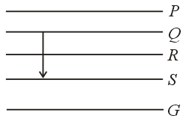Umakant Kondapure, Collin Fernandes, Nipun Bhatia, Vikram Bathula and, Ketki Deshpande Solutions for Chapter: Atoms, Molecules and Nuclei, Exercise 1: Classical Thinking
Umakant Kondapure Physics Solutions for Exercise - Umakant Kondapure, Collin Fernandes, Nipun Bhatia, Vikram Bathula and, Ketki Deshpande Solutions for Chapter: Atoms, Molecules and Nuclei, Exercise 1: Classical Thinking
Attempt the practice questions on Chapter 12: Atoms, Molecules and Nuclei, Exercise 1: Classical Thinking with hints and solutions to strengthen your understanding. MHT-CET TRIUMPH Physics Multiple Choice Questions Part - 2 Based on Std. XI & XII Syllabus of MHT-CET solutions are prepared by Experienced Embibe Experts.
Questions from Umakant Kondapure, Collin Fernandes, Nipun Bhatia, Vikram Bathula and, Ketki Deshpande Solutions for Chapter: Atoms, Molecules and Nuclei, Exercise 1: Classical Thinking with Hints & Solutions
In Davisson and Germer's experiment, accelerating potential is kept constant at . As the detector is rotated, the first intensity maximum is obtained at an angle of
(, )
The solution of Bragg's equation will not exist if
Figure shows the energy levels and of an atom where, is the ground state. A red line in the emission spectrum of the atom can be obtained by an energy level change from to . A blue line can be obtained by which of the following energy level change?

What will be ratio of radii of nucleus to nucleus?
The minimum energy required to excite a hydrogen atom from its ground state is
The ratio of areas within the electron orbits for the first excited state to the ground state for hydrogen atom is
Assertion: Plutonium is a transuranic element.
Reason: The materials which can undergo fission easily are called transuranic element.
